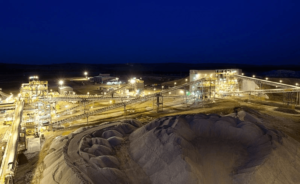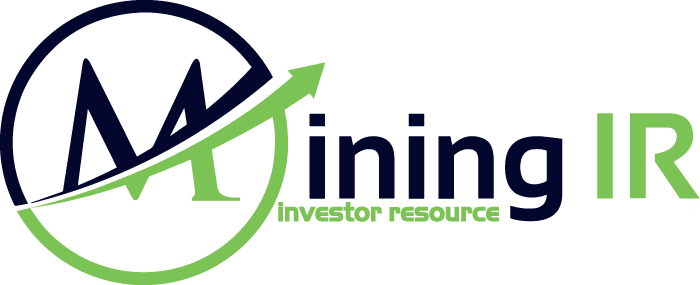Australian tantalum supply could increase tenfold by 2022 driven by the lithium boom, as Roskill’s principal tantalum consultant, Patrick Stratton, explains.
Tantalum (Ta) is a relatively rare element in nature, although it is widely distributed, with world reserves estimated at just under 320kt Ta2O5 according to the Tantalum-Niobium International Study Center. Although 40% of reserves are located in Latin America, the region was only the second-largest mine supplier in 2017 at just under 20% of the 1.8kt total, while Africa – at only 16% of reserves – contributed more than 60% of mine supply.
The pattern of primary tantalum supply will change rapidly and significantly in the coming years, with supply of by-product tantalum from lithium mining in Australia (contributing a mere 3% of mine supply in 2017) set to kick in. By as early as 2022, Australian tantalum mine output could potentially increase tenfold, taking its share of the world total to over 20%. Mine production of tantalum from South America and Africa is also expected to grow over the next decade, with several mine projects under development. Project developers include Kazera Global Investments, in Namibia, and Pilbara Minerals, Alliance Mineral Assets and Galaxy Resources, all in Australia. There are also several privately owned projects in South America.

Existing producers in the region are also expanding. In Brazil, the Mibra operation has been rebuilt following the fire in early 2017 and the move into lithium production could result in a large increase in tantalum production. The Pitinga mine is also expanding. In just the next five years, South American supply is set to more than double, with its share of the global total rising to more than 30%.
With large quantities of more-easily traceable tantalum entering the market, the importance of Central Africa will probably diminish and the continent’s share of world production could fall to below 40% by early next decade. The decision by the DRC government to increase the royalty to 10% may also make Central African tantalum less attractive to the international market. Not only does it increase costs/prices, it may also serve to encourage smuggling of DRC tantalum via neighbouring countries. While bagging and tagging schemes have improved traceability, initiatives such as geological passports (fingerprinting) and blockchain have potential to further enhance transparency in the supply chain.

Tantalum is a small market in tonnage terms and is thus susceptible to substantial fluctuations in response to, often, single events. After peaking at 1.9kt Ta in 2008, the economic downturn caused consumption to fall to only 1.1kt in 2009. Subsequent recovery saw demand remain in the range of 1.7-1.9ktpy over the period 2010 to 2016, which some would regard as stagnation. Things picked up in 2017, with demand estimated at 2.2kt, and over the next five years demand is forecast to rise to 2.7kt at a rate of around 5%py.
Such fluctuations can also have a big impact on prices. A production outage at just one operation can have a major effect, as can unforeseen upticks in downstream demand that catch processors off-guard and holding little inventory. A combination of such events in 2017 saw tantalum concentrate prices jump from little more than US$50/lb Ta2O5 at the start of the year to nearly US$90/lb by year-end. Prices remained over US$100/lb to mid-2018 although the sharp increases appear to have stopped. They fell back below US$100/lb in July and by the end of August were at US$94/lb. There is little reason to expect them to rise dramatically and the impending growth in supply of lithium by-product should have a moderating effect. Roskill’s view is that prices should settle at a natural level of about US$80/lb.

Tantalum has a diverse range of applications. Electronics are the major end use, with capacitors accounting for a third of demand in 2017 and sputtering targets around 15%. Much of the roughly 20% going into tantalum chemicals also ended up in electronics. Superalloys, mill products and carbides accounted for the remainder. With the exception of carbides, where demand is expected to fall by 1-2%py, increases are likely across all segments of the market, although sources differ on precise numbers, usually because of differences of opinion on market breakdown. In general, the non-carbide markets should have growth of 4-7%py.
An important aspect to consider is the role of scrap and recycling. Some is revert scrap, from manufacturing of, for example, capacitors and some is end-of life scrap. The latter is growing in importance. Recycling rates across different consuming industries show wide variance. In the case of capacitors, less than 20% of the tantalum going into manufacturing becomes revert scrap. For sputtering targets, the proportion is about 65%.
The amount of tantalum units returning to the chain impacts on the requirement for “new” tantalum. As there is little consensus on exactly how the market breaks down in terms of applications, there is considerable disagreement on projected supply-demand balances, with some observers predicting surpluses and others calling for deficits. Neither viewpoint results in balances that amount to more than a few weeks’ of annual demand.
Recycling, prices, tantalum supply and demand, ethical sourcing, and the outlook for Latin America will all be discussed by expert speakers from across the sector at Roskill’s Tantalum 2018 conference, held at the Tower Hotel in London on 25-26 September 2018. Speakers include Intel, Taboca, Kazera, Pilbara Minerals, Venezuela Servicios Mine 3, Argus, and the US Department of State. For more information, visit: https://roskill.com/event/tantalum-2018/
Contributor: Patrick Stratton, Principal Consultant, Roskill Information Services, UK. Patrick has 30 years’ experience in analysing a wide range of industrial minerals and metals markets and has undertaken research fieldwork in nearly 30 countries. Patrick is a recognised authority in the global tantalum and niobium industries and has been the author of several editions of the Roskill reports on both commodities. Roskill’s Tantalum: Global Industry, Markets & Outlook report to 2028 will be published in September 2018.
Article edited for publication by Liam Hardy – Follow our ‘Resource of the Month – Tantalum’ series sponsored by Roskill Information Services:
Resource of the Month – Tantalum: Josh Powell discusses Rwanda’s mines, past and present















